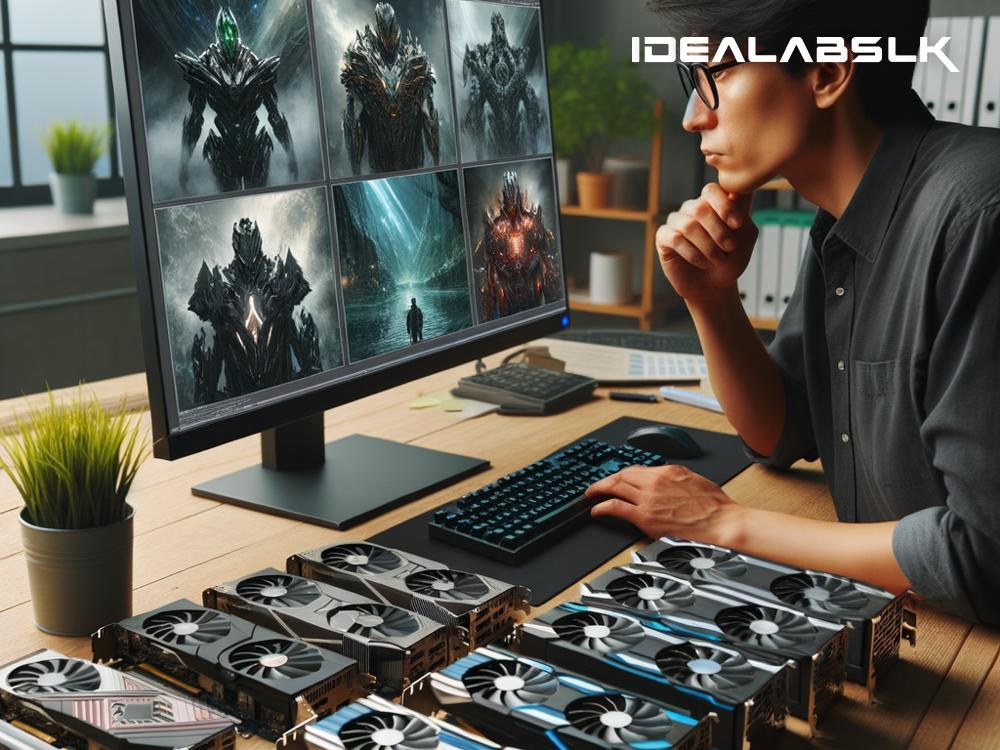Choosing the Right Graphics Card for Graphic Design: A Simple Guide
In the world of graphic design, having the right tools can make a big difference in the quality of your work and your overall productivity. One key component of a good graphic design setup is the graphics card. This might seem a bit technical to some, but worry not. I'm here to break it down for you in simple terms, making it easy to understand why it's important and how to choose the right one for your needs.
Why is a Graphics Card Important for Graphic Design?
Think of a graphics card as the heart of visual output on your computer. It's responsible for rendering images, videos, and animations, making everything look sharp and run smoothly on your screen. For graphic designers, a good graphics card means faster rendering times, the ability to handle complex design tasks without your computer slowing down, and an overall smoother experience while using design software.
Integrated vs. Dedicated Graphics Cards
Before diving into how to choose a graphics card, it's important to know the difference between integrated and dedicated graphics cards. Integrated graphics are built into the CPU (the brain of your computer) and share memory with it. They're fine for basic tasks but might not keep up with the demands of advanced graphic design.
On the other hand, dedicated graphics cards are separate units with their own memory (VRAM). They're more powerful and can handle much more intensive graphic tasks. If you're serious about graphic design, a dedicated graphics card is the way to go.
Key Factors to Consider When Choosing a Graphics Card for Graphic Design
-
Performance: Look at the card's processing power, which is usually indicated by its model number. Higher model numbers generally mean better performance. For instance, in Nvidia’s lineup, an RTX 3080 is faster than an RTX 3070.
-
Memory (VRAM): More VRAM allows a graphics card to store more data directly on the card, which is beneficial for high-resolution graphics work and complex projects. 4GB of VRAM is a minimum, but 8GB or more is recommended for professional design work.
-
Compatibility: Ensure the graphics card you choose is compatible with your computer's motherboard, power supply, and case size. Also, check that it has the right ports for your display setup.
-
Software Requirements: Some graphic design software might have recommended or minimum graphics card requirements. Check these requirements against the graphics card you’re considering.
-
Price: Graphics cards can vary widely in price. The latest and most powerful models can be quite expensive. Determine your budget and find the best card within it that meets your graphic design needs.
Recommendations for Different Levels of Graphic Design Work
-
For Beginners or Light Work: If you’re just starting out or your work is relatively light (think simple logo design, basic photo editing), a mid-range dedicated graphics card like the Nvidia GTX 1650 or AMD Radeon RX 550 will do the job without breaking the bank.
-
For Intermediate Designers: If your projects are getting more complex, involving 3D modeling or high-resolution video editing, consider stepping up to something like the Nvidia RTX 3060 or AMD Radeon RX 6600. These offer a good balance of performance and price.
-
For Professionals and Heavy Workloads: For top-tier professional work, where time is money, and the quality needs to be pixel-perfect, high-end cards like the Nvidia RTX 3080 or the AMD Radeon RX 6800 XT will offer the speed and power to handle anything you throw at them.
Final Thoughts
Choosing the right graphics card for graphic design might seem daunting but remember that it boils down to understanding your needs and matching them with a card's features. Don’t overbuy if you’re doing light design work, but also don’t skimp if you’re planning to do complex tasks that require significant rendering power.
Investing in the right graphics card can dramatically improve your design experience, letting your creativity flow without being hindered by technical limitations. So, take your time, do your research, and choose wisely. Happy designing!
Remember, the landscape of graphics cards is always changing with new technology. Keep an eye out for the latest releases and reviews. Sometimes, it's not about having the best of the best, but the best for you and your creative journey.

